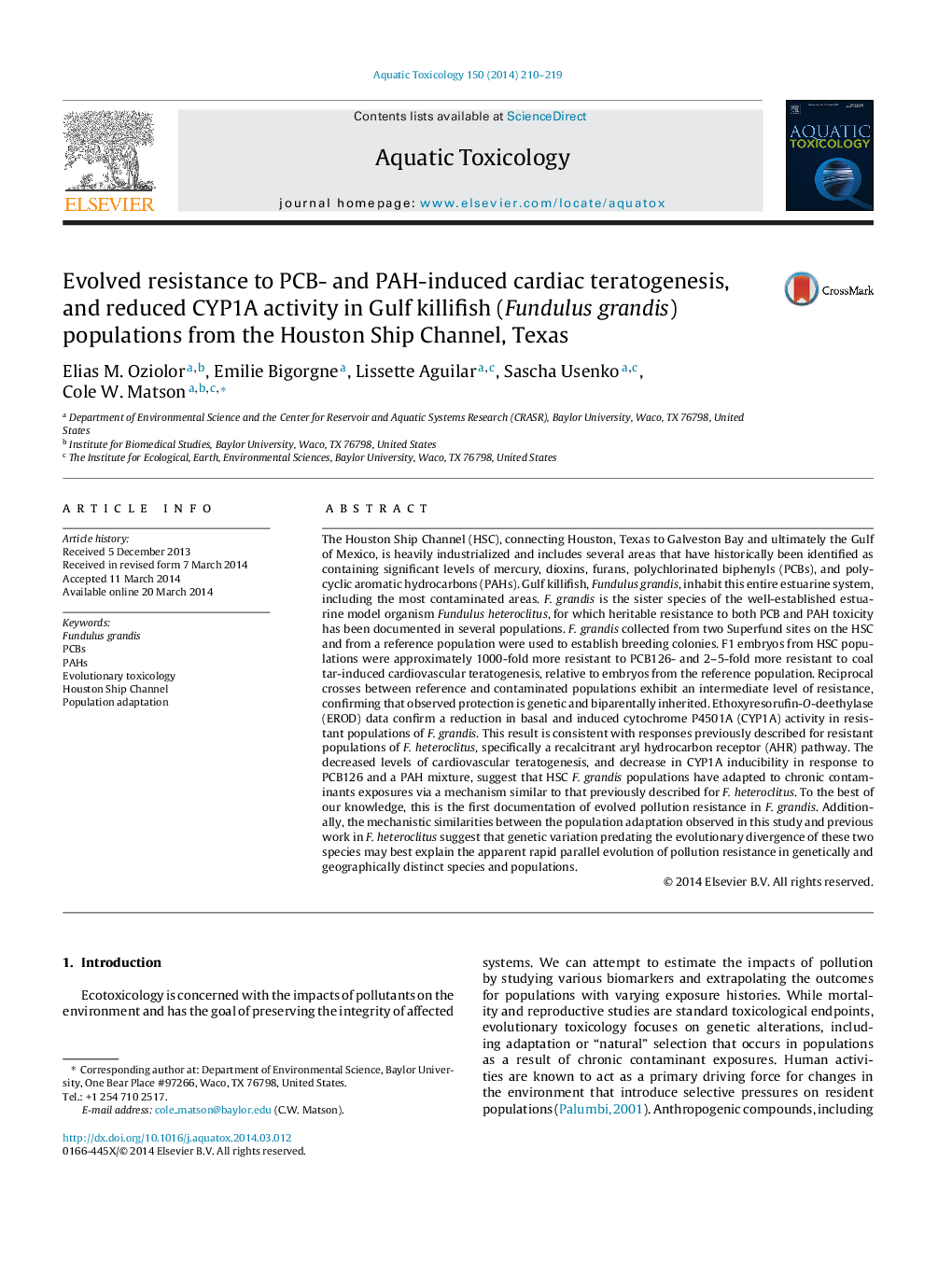| Article ID | Journal | Published Year | Pages | File Type |
|---|---|---|---|---|
| 4529284 | Aquatic Toxicology | 2014 | 10 Pages |
•Polluted site F1 embryos had lower PCB126 and PAH induced cardiac teratogenesis.•Polluted site F1 embryos had lower CYP1A activity when exposed to PCB126 and PAHs.•Protection from cardiac deformities was biparentally inherited.•Embryos from one polluted site exhibited reduced basal chromosomal damage.
The Houston Ship Channel (HSC), connecting Houston, Texas to Galveston Bay and ultimately the Gulf of Mexico, is heavily industrialized and includes several areas that have historically been identified as containing significant levels of mercury, dioxins, furans, polychlorinated biphenyls (PCBs), and polycyclic aromatic hydrocarbons (PAHs). Gulf killifish, Fundulus grandis, inhabit this entire estuarine system, including the most contaminated areas. F. grandis is the sister species of the well-established estuarine model organism Fundulus heteroclitus, for which heritable resistance to both PCB and PAH toxicity has been documented in several populations. F. grandis collected from two Superfund sites on the HSC and from a reference population were used to establish breeding colonies. F1 embryos from HSC populations were approximately 1000-fold more resistant to PCB126- and 2–5-fold more resistant to coal tar-induced cardiovascular teratogenesis, relative to embryos from the reference population. Reciprocal crosses between reference and contaminated populations exhibit an intermediate level of resistance, confirming that observed protection is genetic and biparentally inherited. Ethoxyresorufin-O-deethylase (EROD) data confirm a reduction in basal and induced cytochrome P4501A (CYP1A) activity in resistant populations of F. grandis. This result is consistent with responses previously described for resistant populations of F. heteroclitus, specifically a recalcitrant aryl hydrocarbon receptor (AHR) pathway. The decreased levels of cardiovascular teratogenesis, and decrease in CYP1A inducibility in response to PCB126 and a PAH mixture, suggest that HSC F. grandis populations have adapted to chronic contaminants exposures via a mechanism similar to that previously described for F. heteroclitus. To the best of our knowledge, this is the first documentation of evolved pollution resistance in F. grandis. Additionally, the mechanistic similarities between the population adaptation observed in this study and previous work in F. heteroclitus suggest that genetic variation predating the evolutionary divergence of these two species may best explain the apparent rapid parallel evolution of pollution resistance in genetically and geographically distinct species and populations.
